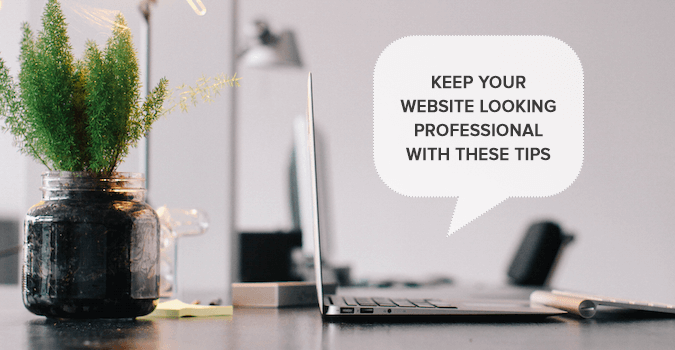

You may have just started a website or blog or maybe you’ve been at it for years, either way, you want your site to look professional. Your viewers will most likely become return viewers if they trust your blog and it looks professional and not like it was piled together in a matter of minutes.
Here are a few basic tips to help you attain or maintain a professional looking blog or website:
Good grammar, correct spelling and good content
According to Google, spelling correctly and good grammar correlates with the ranking of your site. Google did a study and the sites with correct spelling and grammar had a higher ranking than those who didn’t. So if you can put in the time to make sure something is edited well, your chances are better at increasing your rank status, not to mention having viewers who appreciate the effort.
Good spelling and grammar also pair up with good content, you will find it’s probably a solid piece of content that backs up information with fact checking and is reliable. Research, along with spelling and grammar, create professional content which makes your blog look professional. The more professional your content, the more likely you are to have viewers linking to your articles.
Easy and simple navigation
Your navigation system is the key to your site, it is what gets your viewers from one page to the other. If your navigation system is properly designed your viewers will find the information they need fast. Which also they are more likely to purchase your service or product or link and share your information. Easy navigation systems also result in fewer bounces and increases the amount of time they spend on your site.
Quality photos
Quality photos don’t have to be taken by a professional and/or cost lots of money. There are plenty of stock photography options available that are free or cost as little as a dollar. Make sure the images you choose are appropriate to your site, content and products, if applicable.
Proper typography
Your choice of fonts has a big impact on your design. If you like a certain font because it is cute or decorative, that doesn’t mean it is the best option for your readers. Fonts should be limited to 2 or 3 and be large enough for most groups of ages.
Typography encompasses more than just your font choices, it also includes elements such as kerning, line spacing and justification. You’ll want to make sure your content isn’t too crowded and has plenty of negative space around it. Doing this will create an aesthetically pleasing site that isn’t overwhelming to your viewer.
Susan Sullivan
Susan lives in the Dallas/Fort Worth Metroplex area with her husband and children. She is an avid distance runner, environmentalist, part-time beekeeper, chicken farmer and amateur photographer.
